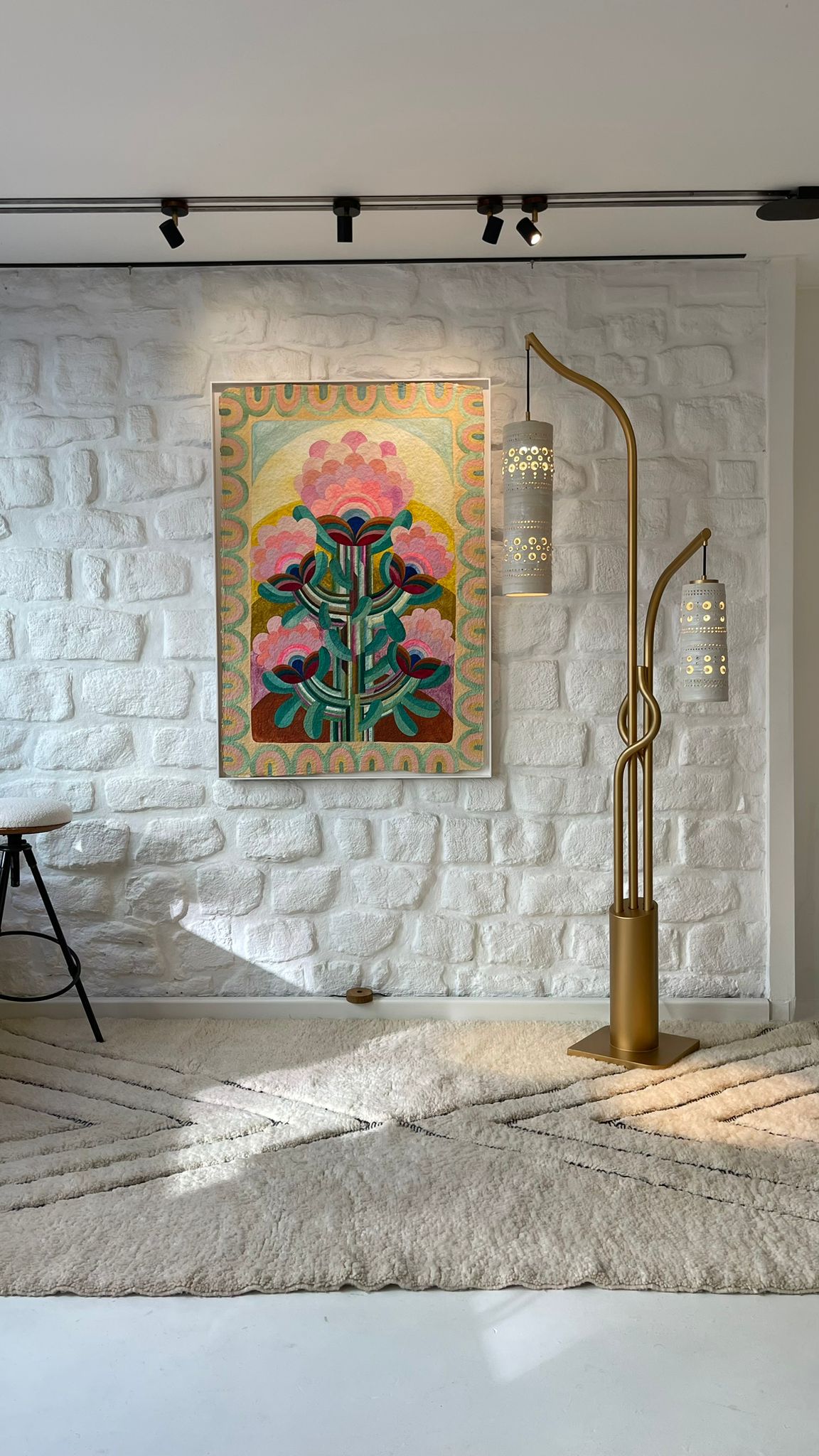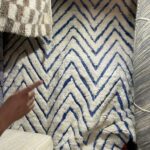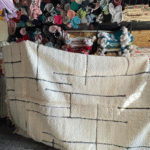True treasures of craftsmanship, Berber carpets embody a cultural and artistic wealth deeply rooted in North African history.
A Berber carpet, also known as a Berber tribal rug, is a type of rug crafted by the Berber tribes of North Africa, including Morocco, Algeria, Tunisia, and Libya. These carpets are traditional textile artworks, handwoven by Berber women in these regions for generations.
Berber carpets are renowned for their diversity of patterns, colors, and techniques.
Each tribe and region has developed its own distinctive style, creating a diverse palette of artistic expressions. Geometric patterns, abstract lines, and traditional cultural symbols tell ancient stories, while vibrant colors reflect the rich spectrum of the surrounding nature.
These carpets are made from pure sheep’s wool.

High Atlas Berber Carpets at the Montmartre Showroom: A Cooperative of 120 Women in the Pure Tradition of Moroccan Craftsmanship.
Berber carpets are renowned for their diversity of patterns, colors, and techniques.
Each tribe and region has developed its own distinctive style, creating a varied palette of artistic expressions. Geometric patterns, abstract lines, and traditional cultural symbols narrate ancient stories, while vibrant colors reflect the rich spectrum of the surrounding nature.
Our carpets are handcrafted within a cooperative of 120 women weavers in the High Atlas region: the process of creating a Berber carpet is meticulous manual labor that can take a significant amount of time depending on the size and complexity of the rug.
They are made from high-quality Moroccan wool yarn, both comfortable and environmentally friendly, ensuring durability.

Berber carpet paired with the Ceramica floor lamp by Antoine Jourdan and Georges Pelletier, which was exhibited at the Louvre Museum of Decorative Arts, a painting from the Flowers series by Caroline Rennequin, and a custom-made stool by Dominique Réol.
In the heart of the High Atlas, variations of colors and shapes.
Today, Berber carpets are cherished worldwide for their timeless beauty and captivating history. They also serve as symbols of Berber cultural identity and a bridge between the past and the present, uniting ancient traditions with contemporary aesthetics.
From traditional carpets to custom-made creations tailored to your interior
We will be delighted to welcome you at 98 rue Lepic to showcase the displayed carpets. It is possible to acquire a traditional carpet of your choice in 15 days ,or a custom-made in 2 months.
The women adapt their ancestral knowledge to contemporary tastes by creating carpets with modern inspirations based on your preferences. Below is a custom Berber carpet inspired by Cocteau.

How to maintain your Berber carpet ?
Berber carpets are woven from natural and eco-friendly materials that don’t fare well with vacuuming. To maintain it best, simply flip the carpet over on a flat surface for a few days; this way, all impurities will fall off the rug, and you can then vacuum the floor afterward. You can also get a brush and brush your rug to remove dust, hair, etc.
It was a pleasure sharing all of this with you. I hope you enjoyed this article.










